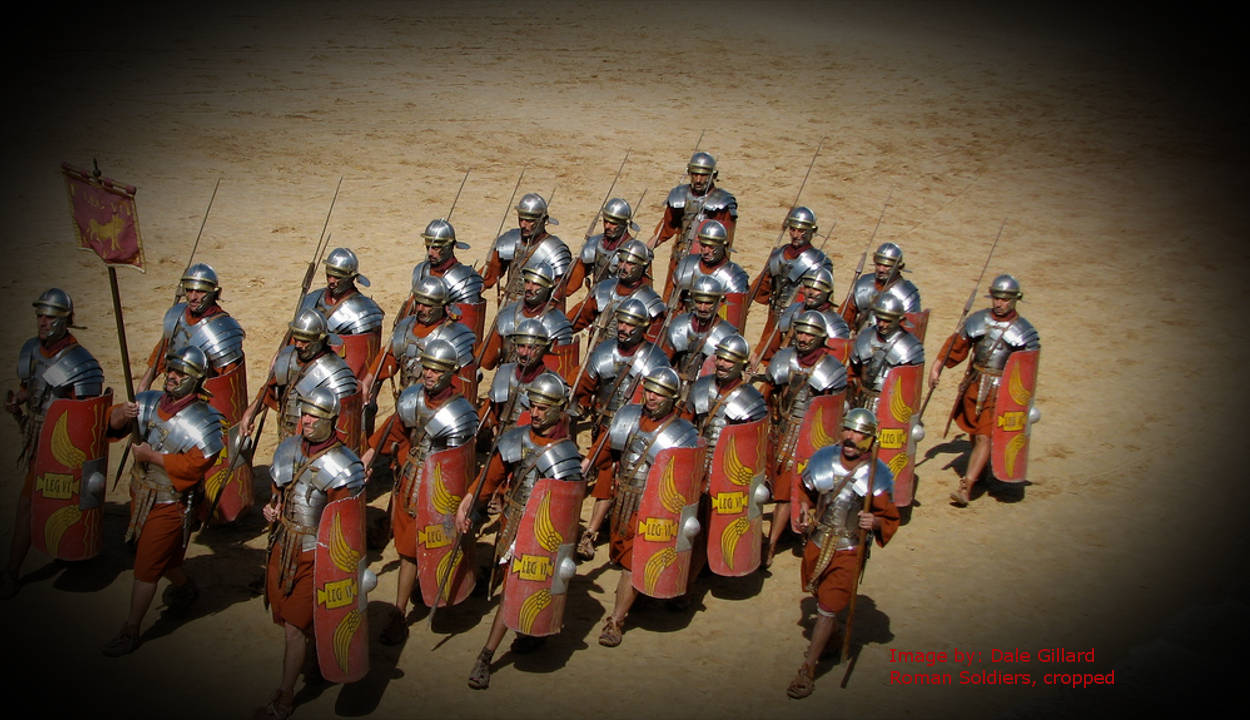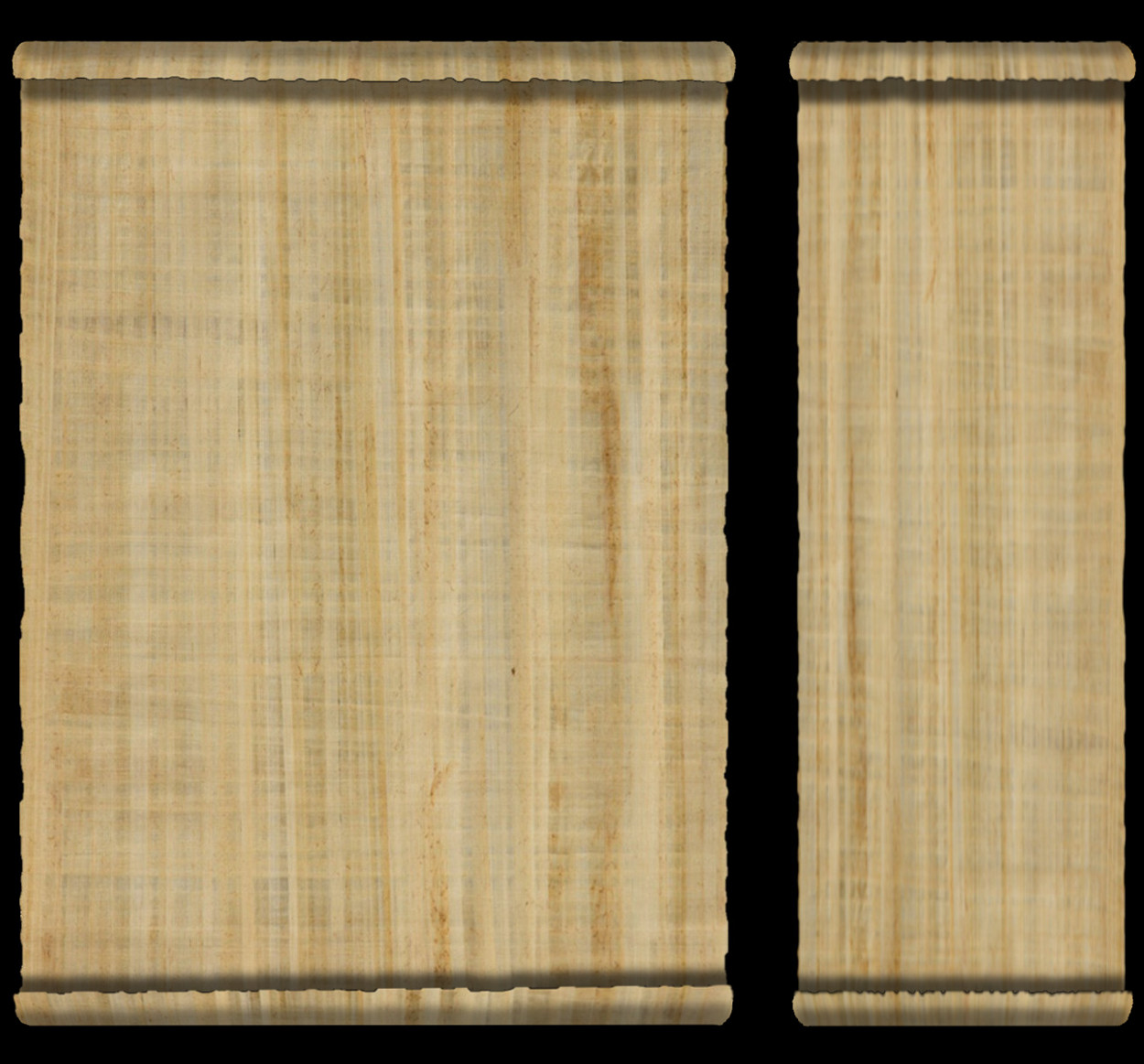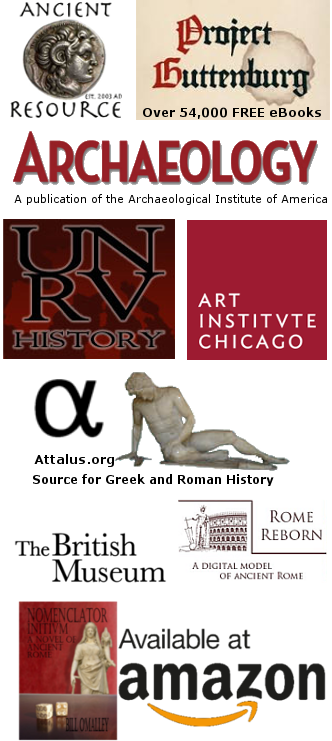


Ancient Roman Military
From its founding in or around 753 BC to the fall of the Roman Empire in the west in 476 AD, Rome was a military power. During that time the makeup and structure of the Roman military changed dramatically. This page will describe the Roman army from it’s foundation as a kingdom to the end of the Roman Republic and the time of Julius Caesar.
Until about 300 BC the Roman army, under the command of the city’s king, was used in local conflicts with neighboring city states. The early Roman army was manned through the use of a levy system in which citizen soldiers were called up to serve as needed in an annual levy of troops. The citizen soldier provided his own equipment and arms. The early Roman army was organized in much the same way as the Greek Phalanx.
Roman society was stratified according to class and wealth and that was reflected in the makeup up the army. Infantry soldiers were drawn from the plebeian class while the cavalry (equites) was made up of patricians, as only wealthy men could afford to own and maintain horses. The army was composed of men between the ages sixteen to forty-six and was originally divided into four legions (Latin legio). The word legion comes from lego, meaning to “pick out” or “select,” no doubt a reference to the levying of troops. Later, as the demand for a larger army arose, the number of legions rose to more than fifty.
With the establishment of the republic in 509 BC, the command of the army was assumed by one of the two elected consuls. It is most likely that the reason for having two elected consuls was to allow one to remain behind to govern the city while the other led the legions in war. As the number of legions grew and there were multiple simultaneous conflicts, other elected offices were established to provide military leadership.
In the period called by historians the mid-Republic which began around 300 BC, the army adopted a manipular system for its organization. This system of organization was picked up from the Samnite army during the Samnite Wars of 343 – 290 BC. A manipular legions was made up of four lines of soldiers of different experience levels, with the younger soldiers in the front and the older soldiers in the back. The four lines were the velites, the hastate, the principes, and the triarii. This system allowed for weary troops in the front to fall back to be replaced by fresh men from the line behind them. The numbers varied, but the legion consisted of approximately ten to twenty maniples of about sixty men for each row, forming a legion of between 5000 and 6000 soldiers. In addition to the Roman troops, allied states were required to provide troops (alae) to serve in the army. These troops numbered nearly as many as the Roman forces and often provided specialized units, such as archers and slingers. The manipular system was gradually replaced by cohorts in the last half of the second century BC.

A regular standing army became necessary near the end of the third century BC with the second Punic War (218 – 201 BC). This war with Carthage brought Rome control of distant lands in Spain and North Africa. Annual levies of soldiers were no longer sufficient to defend Rome’s new acquisition. Permanent garrisons were needed.
In the late Republic, the time of Julius Caesar, there was a marked decrease in maintaining the army through conscription. By the late republic, many of the men serving in the legions were volunteers who signed up for a number of years (often 16 years), in exchange for regular pay and land to settle on in retirement. With the expansion of Roman citizenship as a result of the Social War (91 – 88 BC) to all of Italy (Italia) there was a much larger pool of potential recruits. The Marian reforms, instituted by the consul Gaius Marius in 107 BC allowed for better training and organization of the legions and opened military service to the poor who held no land and formed the foundation of the standing army that allowed Caesar to complete the conquest of Gaul.
Click on the links below to learn more about the ancient Roman military.



These links are being provided as a convenience and for informational purposes only; they do not constitute an endorsement or an approval by Nomenclator Books or Bill O'Malley of any of the products, services or opinions of the corporation or organization or individual. Nomenclator Books and Bill O'Malley bears no responsibility for the accuracy, legality or content of the external site or for that of subsequent links. Contact the external site for answers to questions regarding its content.


















